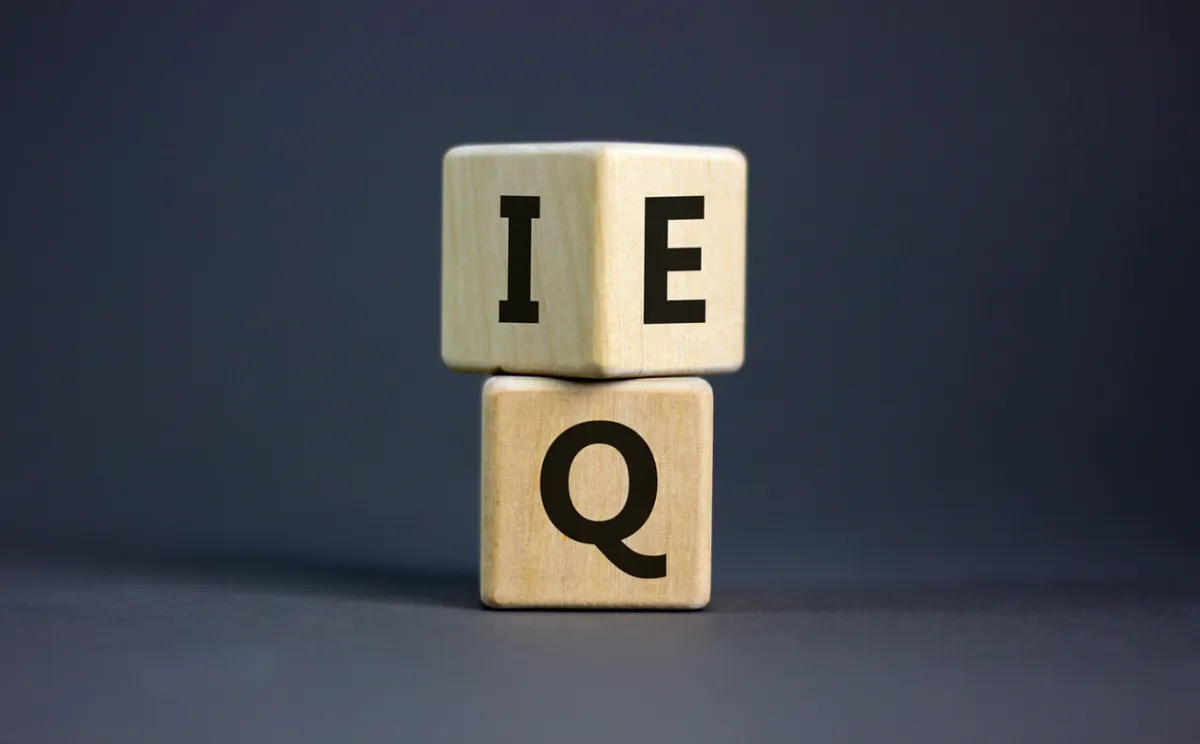Insights on Leadership

Why Emotionally Intelligent Leaders Outperform — and How to Build That Edge
The Human Advantage
In an era where artificial intelligence can forecast markets, summarize meetings, and write code, the most powerful differentiator in leadership isn’t technological — it’s emotional.
When psychologist Daniel Goleman first introduced the concept of emotional intelligence in the 1990s, corporate hierarchies were stable, roles were fixed, and performance was measured by precision and productivity. Today, organizations are fluid, decisions are distributed, and influence travels in every direction.
The modern leader no longer succeeds by managing information; they succeed by managing energy — emotional, relational, and organizational.
That shift changes everything we know about what it means to lead.
The Missing Competency
Many organizations still promote based on cognitive intelligence — IQ, strategy, and technical ability — but research shows that’s no longer the strongest predictor of leadership effectiveness.
Goleman’s studies across more than 200 companies revealed that emotional intelligence accounts for nearly 90% of what sets high performers apart.
Why? Because leadership is fundamentally an emotional transaction.
Every decision, presentation, and performance review is also an emotional exchange that either builds or erodes trust.
The irony is that most leaders underestimate how much their emotional patterns — tone, timing, even micro-expressions — shape the behaviors of everyone around them.

The Misunderstanding of Emotional Intelligence
Emotional intelligence has too often been mistaken for “being nice.” But empathy without accountability creates comfort, not growth.
True emotional intelligence balances compassion with clarity.
At its core, it’s the ability to remain grounded in self-awareness and use that awareness to influence outcomes intentionally — not reactively.
As I tell executives during debriefs of their EIQ Assessments:
Emotional intelligence isn’t about suppressing emotion. It’s about mastering the space between stimulus and response — that moment where leadership actually happens.

Five Ways Emotionally Intelligent Leaders Lead Differently
Goleman’s original model — self-awareness, self-regulation, motivation, empathy, and social skill — remains timeless. But in the context of today’s hybrid and high-velocity workplaces, those dimensions manifest in new, high-impact behaviors.
1. Improved Decision-Making
Emotionally intelligent leaders don’t eliminate emotion from decisions — they integrate it wisely.
They notice when fear, ego, or fatigue begin to bias judgment and create the mental space to recalibrate. One CEO we coached developed a two-minute “emotional check-in” ritual before major meetings. Within a quarter, his team’s decision quality and confidence in those decisions measurably improved.
2. Enhanced Communication
Communication has become a leader’s currency.
Emotionally intelligent leaders translate strategy into meaning. They don’t just tell people what to do — they explain why it matters and listen for what’s unsaid.
Empathy sharpens clarity; it doesn’t dilute it.
3. Constructive Conflict Resolution
Conflict isn’t a sign of dysfunction; it’s a sign of engagement. The difference lies in how it’s handled.
Leaders with high EIQ use disagreement as data. They separate emotion from ego, validate perspectives, and redirect energy toward shared outcomes. That’s how psychological safety becomes a performance driver.
4. Increased Engagement and Trust
When employees feel seen and understood, they reciprocate with commitment. Emotionally intelligent leaders practice presence — the discipline of paying attention fully.
It’s not charisma that builds engagement; it’s consistent curiosity about others’ experience.
5. Adaptability in Change
Change reveals emotional capacity. In moments of uncertainty, teams don’t look for new instructions — they look for emotional signals.
Leaders who manage their own anxiety model stability for others. Adaptability, at its essence, is emotional agility.

From Individual Awareness to Organizational Intelligence
Developing emotional intelligence isn’t a solo endeavor; it’s a systems strategy.
That’s where N-BAC’s Trio Model — Managing Up, Across, and Down™ — reframes how EI operates in real leadership ecosystems.
Managing Up demands emotional regulation and strategic empathy: the ability to influence authority through trust, not tension.
Managing Across requires social awareness and collaborative discipline to align peers without positional power.
Managing Down tests self-regulation and motivation — leading others through consistency, not control.
When leaders build emotional intelligence in all three directions, alignment becomes cultural, not personal.
That’s the moment an organization shifts from compliance to commitment.
How to Develop the Emotional Edge
Emotional intelligence can be measured, coached, and scaled. At N-BAC, our EIQ Assessments provide leaders with a clear diagnostic: where self-perception and behavioral impact diverge.
The process begins with awareness and ends with action:
1️⃣ Measure: Understand emotional tendencies and triggers.
2️⃣ Debrief: Translate data into meaningful behavior change.
3️⃣ Coach: Reinforce new habits through feedback and accountability.
4️⃣ Sustain: Embed reflection rituals into daily leadership practice.
Because emotional intelligence isn’t built in a workshop — it’s built in moments of choice, practiced over time.
The New Leadership Equation
As technology continues to advance, the emotional bandwidth of leaders will determine the human velocity of their organizations.
Data drives direction; emotion drives execution.
Artificial intelligence may analyze patterns — but it can’t inspire belief.
The leaders of the future will be those who lead not just with their heads, but with their whole selves — integrating intellect, empathy, and self-mastery.
Or, as I often remind executives:
“Managing others begins with managing emotions. Managing organizations begins with managing self.”
That’s the art — and science — of emotionally intelligent leadership.
At N-BAC, we help organizations strengthen leadership from the inside out, starting with emotional intelligence.
Through our EIQ assessments, coaching, and training, we help leaders increase self-awareness, empathy, and impact across every level of the organization.
Schedule an EIQ Assessment Information Session
Quick Links
Copyright 2025. N-BAC. All rights reserved.

